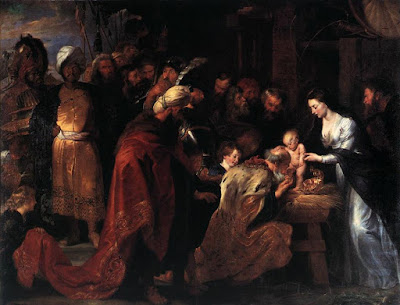The Introit for Sexagesima Sunday - the second Sunday before Lent (used only in the Extraordinary Form today) - is Exsurge Quare. The text comes from Psalm 44:23-26, and is quite dramatic, in fact:
Pre-Lent - Sexagesima: Introit from Corpus Christi Watershed on Vimeo.
Here's another video of this, here by The Benedictine nuns of Notre-Dame de l'Annonciation, Le Barroux.
Here's the chant score:

About Sexagesima, from the Catholic Encyclopedia of 1913:
Pre-Lent - Sexagesima: Introit from Corpus Christi Watershed on Vimeo.
Exsúrge, quare obdórmis, Dómine? exsúrge, et ne repéllas in finem: quare fáciem tuam avértis, oblivísceris tribulatiónem nostram? adhaésit in terra venter noster: exsúrge, Dómine, ádjuva nos, et líbera nos. Vs. (Ps. 43: 2) Deus, áuribus nostris audívimus: patres nostri annuntiavérunt nobis. Vs. Glória Patri, et Fílio, et Spirítui Sancto. Sicut erat in princípio, et nunc, et semper, et in saécula sæculórum. Amen. Exsúrge, quare obdórmis, Dómine? exsúrge, et ne repéllas in finem: quare fáciem tuam avértis, oblivísceris tribulatiónem nostram? adhaésit in terra venter noster: exsúrge, Dómine, ádjuva nos, et líbera nos.
Arise, why sleepest Thou, O Lord? arise, and cast us not off to the end. Why turnest Thou Thy face away, and forgettest our trouble? our belly hath cleaved to the earth: arise, O Lord, help us and deliver us. Vs. (Ps. 43: 2) We have heard, O God, with our ears: our fathers have declared to us. Vs. Glory be to the Father, and to the Son, and to the Holy Spirit. As it was in the beginning, is now, and ever shall be, world without end. Amen. Arise, why sleepest Thou, O Lord? arise, and cast us not off to the end. Why turnest Thou Thy face away, and forgettest our trouble? our belly hath cleaved to the earth: arise, O Lord, help us and deliver us.
Here's another video of this, here by The Benedictine nuns of Notre-Dame de l'Annonciation, Le Barroux.
Here's the chant score:

About Sexagesima, from the Catholic Encyclopedia of 1913:
(Latin sexagesima, sixtieth) is the eighth Sunday before Easter and the second before Lent. The Ordo Romanus, Alcuin, and others count the Sexagesima from this day to Wednesday after Easter. The name was already known to the Fourth Council of Orléans in 541. For the Greeks and Slavs it is Dominica Carnisprivii, because on it they began, at least to some extent, to abstain from meat. The Synaxarium calls it Dominica secundi et muneribus non corrupti adventus Domini. To the Latins it is also known as "Exsurge" from the beginning of the Introit. The statio was at Saint Paul's outside the walls of Rome, and hence the oratio calls upon the doctor of the Gentiles. The Epistle is from Paul, 2 Corinthians 11 and 12, describing his suffering and labours for the Church. The Gospel (Luke 8) relates the falling of the seed on good and on bad ground, while the Lessons of the first Nocturn continue the history of man's iniquity, and speak of Noah and of the Deluge. (See SEPTUAGESIMA.)










